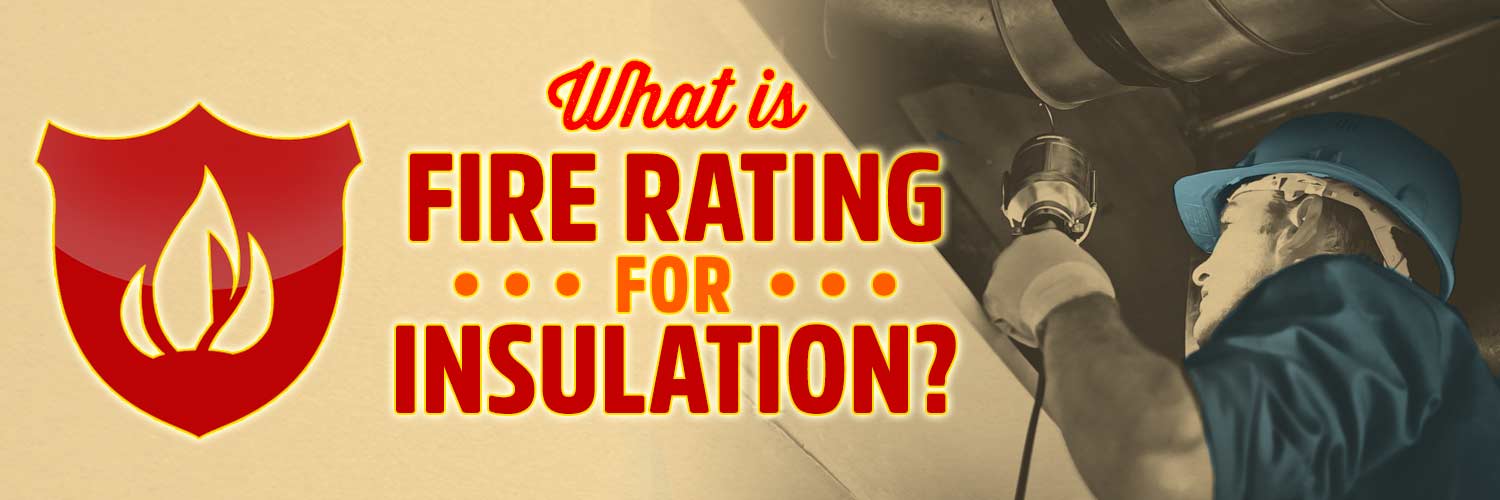What is Fire Rating for Insulation?
injection foam insulation | spray foam insulation | fire rating


When considering insulation for your home, there is more to think about than just comfort and saving money – things like fire rating should be at the top of the list.
So, what is the fire rating for insulation exactly?
Class 1 Fire Rated insulation is what most inspectors call for in a home. To get this rating, the insulation material must have a smoke development that is less than 450 and a flame spread index that is 25 or less, according to the 2015 Michigan Residential Code R302.10.1.
It’s important to note that an insulation material that has a Class 1 Fire Rating is the most fire-resistant, not fireproof.
RetroFoam of Michigan has been installing injection and spray foam insulation since 2002 in homes across the Lower Peninsula. Both the spray foam and RetroFoam injection foam we install in homes are Class 1 Fire Rated.
This means foam insulation doesn’t serve as a catalyst if there were a fire and will self-extinguish when the flame is removed.
In our ongoing efforts to educate homeowners, let’s talk more in-depth about what fire rating is and some of the requirements for insulation.
What is Fire Rating?
The fire rating system for insulation is basically how long the material can withstand a standard fire resistance test.
The Class 1 Fire Rating definition is the flame spread index and smoke development index, which means how fast a flame will spread when introduced to the material and how much smoke it produces. Building inspectors and code require the numbers stated above to reach that Class 1 Fire Rating – 450 or less for smoke development and less than 25 for flame spread.
While Class 1 Fire Rating is the best, there are other ratings that follow but also signify a lower fire resistance of the insulation material.
This standard is universal for any insulation material being installed in your home.
Some foam insulations are inherently at that required mark, so by itself, in some cases, it meets those standards. Traditional insulations like cellulose and fiberglass have additives that help them reach that mark.
Fire Rating for Insulation Requirements
Certain materials, like foam insulation, have requirements when it comes to the fire code.
The code states that because foam insulation is a plastic, it has to be separated from the living space. That separation from the living area is as simple as the drywall in your home.
This only applies to areas that are lived in, so it’s not the case for attics or crawl spaces. This separation is required because there are foam insulation materials on the market that are flammable, while there are others, like the products we offer, that don’t act as a catalyst and even some materials that are actually fire-retardant.
These older foam products are the reason why the code calls for foam plastics to be separated from the living space, even though most materials have evolved since then. In reality, the foam insulation we use is more fire-resistant than the wood the house is built from.
It gets a little tricky when you look at other materials like cellulose and fiberglass. Those materials don’t have the same requirements because they aren’t plastics.
Cellulose is inherently made of flammable materials like newspaper and denim, but the chemicals added to it actually make the premium products on the market so they can’t ignite at all.
When fiberglass is tested, only the material itself is tested. What’s not included in that testing is the craft paper backing that fiberglass batts have. If you were to have a fire, the fiberglass fibers melt, creating a heat source. This heat will cause the craft paper backing to ignite.
Choosing the Right Insulation for Your Home
Fire rating for insulation is important for the safety of your home.
Now that you have a better understanding of the rating system, you're probably feeling more inclined to continue your research into home insulation and foam insulation specifically.
If you want to learn more about foam insulation, its benefits, and how it can keep your home comfortable and healthy, head on over to the Learning Center on our website.
Related Articles
Is Spray Foam Insulation Safe to Have in My Home?
8 Things to Do After a House Fire
What is an Ignition Barrier, and When is it Needed with Spray Foam?
About Amanda Emery
Amanda previously has worked as a breaking news and crime reporter, TV news producer, and editor in Flint and Detroit. Throughout her career as a journalist, she has won several awards from The Society of Professional Journalists - Detroit Chapter and the Michigan Press Association. As part of the RetroFoam of Michigan family, Amanda uses her experience as a journalist to write content that will help educate homeowners on the benefits of foam insulation. When Amanda isn’t writing, she’s spending time with her husband and rescued huskies. She also loves knitting, making art, cooking, and hosting dinner and a movie night for friends and family.



